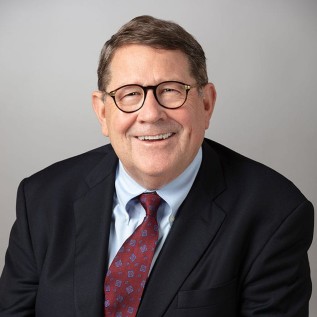When I started writing for Franchise Times 10 years ago, I had been practicing in franchise finance for almost 20 years. All along I had a dream. I had a dream that each solid franchisee would be able to obtain financing for growth and acquisitions. I also had a dream every franchisor would look at its franchisees as partners and would assist them in a reasonable manner to source appropriate financing. This dream would make the franchise community the backbone of the retail economy. Much of what I have dreamed about has come true. It hasn’t necessarily been a smooth course, and the dream has sometimes been shattered for many people in the industry.
My first article in January 1999 was titled “Securitized Lending Proves Significant Capital Sources for Multi-Units.” Securitized lending, I believed, was the great boom and the great source of money for the industry: Wall Street meets Main Street. The franchisee had access to sophisticated capital market products which provided a high volume of funding.
This trend lasted for quite a while; in fact, I wrote an article in January 2000 titled, “Financeable Third and Fourth Tier Concepts.” These were some of the franchise concepts that were emerging, and securitized lending was available for them. However, shortly after that article was published, it was obvious we had all types of issues. I wrote an article in May 2001 titled “New Techniques for Over-Leveraged Situations.” Once again in the pendulum had swung. The capital markets came in and provided a lot of money; and, much like the credit market of today, it collapsed because of easy credit and being over leveraged. I followed that article in August 2001 with an article titled “What Can A Franchisor Do In Troubled Times to Help Its Franchisees?” Again, my dream was that franchisors would step up to help franchisees.
The situation continued to worsen. My February 2002 article, “Creating Your Own Source of Funds,” said the securitized market had dried up and lenders had once again walked away from our space. That article was followed by another article, “Preventing a Meltdown— What Can a Franchisor Do?” I followed that piece with one of my optimistic articles, “Come Back Mr. Money,” hoping we could get a new source of financing. Shortly after that, in February 2003, I wrote an article very much like the one I have written recently, titled “Opportunities to Buy Troubled QSR Stores.” We were in a downturn and yet opportunities abounded.
In late 2003, we began to see private equity step into the market to fill some of the void. My article in June 2004 was titled “Angel Money: Almost like Cash From Above.” We saw exactly what these new sources of financing were—“New, New Money.”
New banks and lenders entered our market segment in late 2004. The most prominent players were GE and some of the larger banks (such as Wells Fargo, Bank of America, Citibank, and Merrill Lynch). Financing started to be available again.
In June 2005, I wrote about the real estate sale/leaseback phenomenon that was taking place but really reached its peak in 2005- 2006, when many large and small sale/leaseback groups emerged. This continued, and in September 2006 I wrote “Smart Use of Sale/ Leaseback,” because the sale/leaseback market was so overheated I was concerned about the overuse of this technique. In 2007, we saw a continued capital influx through consolidation. GE acquired FFCA, then Merrill Lynch, Citicorp and TrustStreet. With GE as new giant lender in 2007, some traditional banking sources retreated. Specialized companies (such as AIG and Irwin) continued to be financing sources.
We started to see the downturn in late 2007. In February 2008, I wrote about “Why Now? Because Restructure May Be Back.” In March, I followed up with “Redoing Debt – Steps in a Successful Restructure.” We could see what was happening. My most recent column in the November/December 2008 issue was “Opportunities for Financing in Tough Times.”
We have gone through the whole cycle several times in the past 10 years. We had the securitization market, which flooded the industry. Then we had the crash and the workouts. Then we had the emergence of private equity, followed by sale/leasebacks and the dominance of large lenders. Now we have the complete pullout of most of the commercial finance groups. We are back to where we were 20 years ago—looking at local and regional banks and niche industry players.
My dream is still alive, particularly as it relates to franchisors who are stepping up to help the franchise community. New lenders also will emerge to provide financing for the franchisees, and franchising will remain a key component of our retail economy.
From January 2009 Franchise Times
Author
-

Co-founder and chairman of Monroe Moxness Berg PA, Dennis is a pioneer in corporate financing with a broad network of finance contacts and clients. He assists businesses, from emerging companies to multi-national firms, by providing creative ideas, identifying unique financing sources, and developing the financial tools necessary for their growth and development.